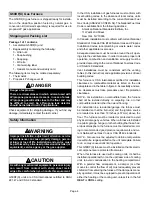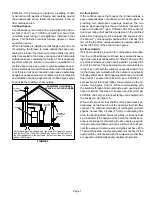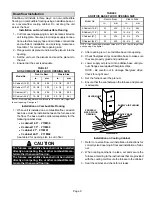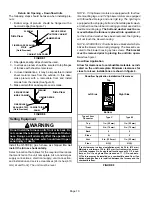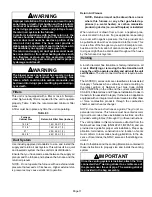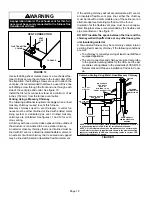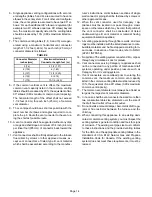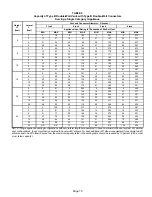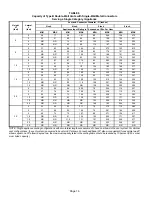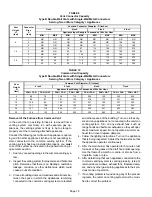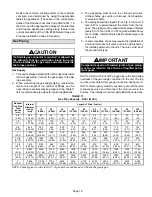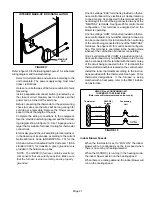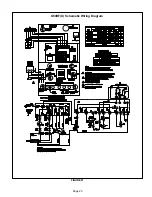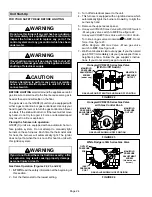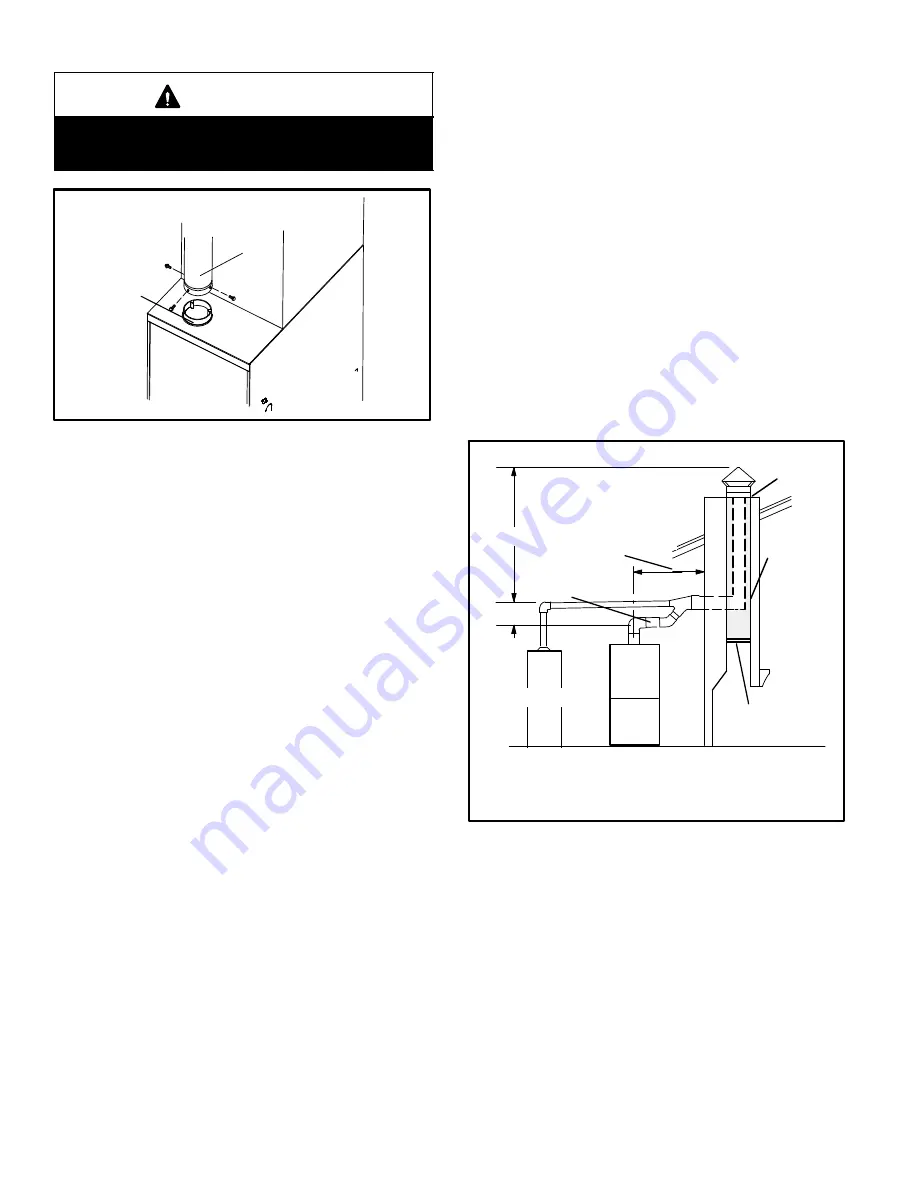
Page 12
WARNING
Asphyxiation hazard. The exhaust vent for this fur-
nace must be securely connected to the furnace flue
transition at all times.
FLUE TRANSITION
COLLAR
VENT CONNECTION
VENT
PIPE
FURNACE
FIGURE 10
Use self−drilling sheet metal screws or a mechanical fas-
tener to firmly secure the vent pipe to the round collar of the
flue transition. If self−drilling screws are used to attach the
vent pipe, it is recommended that three be used. Drive one
self−drilling screw through the front and one through each
side of the vent pipe and collar. See figure 10.
Install the first vent connector elbow at a minimum of six
inches (152 mm) from the furnace vent outlet.
Venting Using a Masonry Chimney
The following additional requirements apply when a lined
masonry chimney is used to vent this furnace.
Masonry chimneys used to vent Category I central fur-
naces must be either tile-lined or lined with a listed metal
lining system or dedicated gas vent. Unlined masonry
chimneys are prohibited. See figures 11 and 12 for com-
mon venting.
A chimney with one or more sides exposed to the outside of
the structure is considered to be an exterior chimney.
An exterior masonry chimney that is not tile−lined must be
lined with B1 vent or a listed insulated flexible metal vent.
An exterior tile−lined chimney that is sealed and capped
may be lined with a listed uninsulated flexible metal vent.
If the existing chimney will not accommodate a B1 vent or
an insulated flexible vent pipe liner, either the chimney
must be rebuilt to accommodate one of these liners or an
alternate approved venting method must be found.
Insulation for the flexible vent pipe must be an encapsu-
lated fiberglass sleeve recommended by the flexible vent
pipe manufacturer. See figure 11.
DO NOT insulate the space between the liner and the
chimney wall with puffed mica or any other loose gran-
ular insulating material
A fan−assisted furnace may be commonly vented into an
existing lined masonry chimney if the following conditions
are met:
S
The chimney is currently serving at least one drafthood
equipped appliance
S
The vent connectors and chimney are sized according
to the provided venting tables for the USA, and the ap-
propriate venting tables in the standards of CSA B149
Natural Gas and Propane Installation Codes in Cana-
da
Common Venting Using Metal−Lined Masonry Chimney
4 in. (102 mm)
minimum
MIN. LENGTH − AS
SHORT AS PRACTICAL
MAX. LENGTH
− SEE NOTE 1
BELOW.
SEALED
PERMANENTLY
SEALED FIREPLACE
OPENING
EXTERIOR
CHIMNEY WITH
METAL LINER
VENT CONNECTOR
SEE NOTE 2
NOTE 1 − Refer to the provided venting tables for installations in the USA
and the venting tables in CSA−B149 for installations in Canada.
NOTE 2 − Either single-walled or double-walled vent connector may be
used. Refer to the capacity requirements shown in the provided venting
tables for installations in USA and the venting tables in current CSA
B149 for installations in Canada.
OTHER
APPLIANCE
FURNACE
FIGURE 11
5 ft. (1.5 m)
minimum




